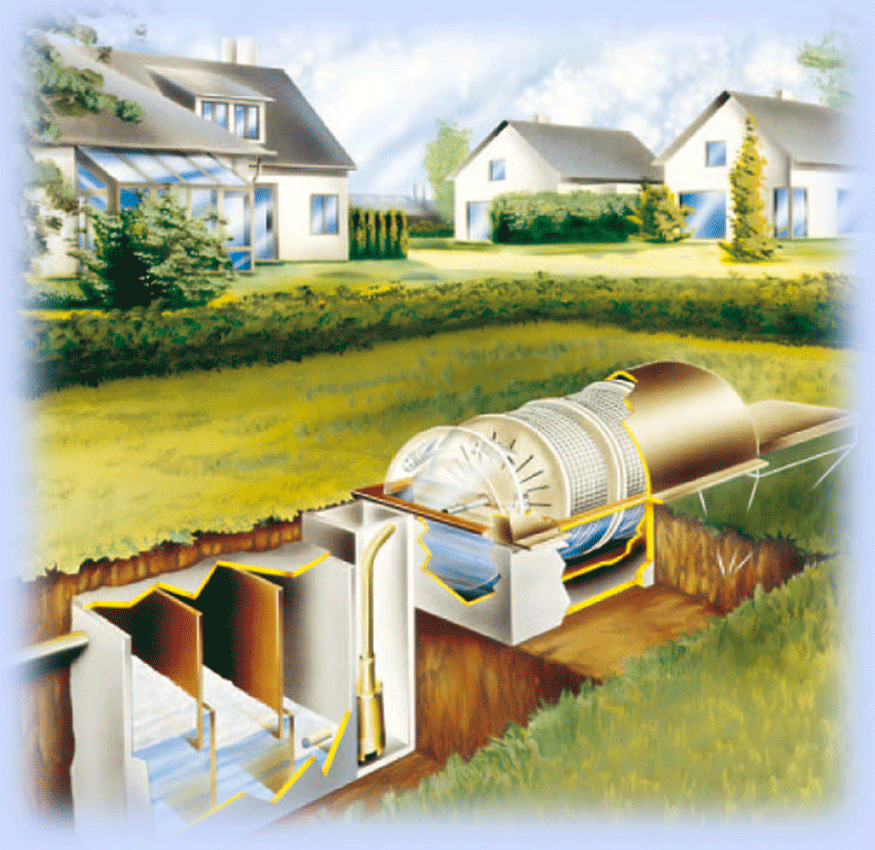|
The subsequently purified water is fed by gravity to a post-sedimentation tank that collects sediments and floating particles that are regularly pumped back to the first chamber of the buffer/septic tank. This recirculation to the septic tank has also a denitrification action.
The low content of suspended materials in the purified water flows over a not cued type overflow either to the river or to a further filtration process in case water is to be reused. In this latter case, bacteria killing treatment may have to be applied: i.e. U.V. radiation or anodic oxidation.
Equipment Description
Capacity and layout of concrete buffer/septic tank are normally discussed on a case-by-case basis: regulations weather conditions, flow rate variations, all influence the 1volume of this equipment usually located underground.
For domestic applications the usual recommended total volume of this tank is equal to ca. 500 ltr. /p.e.
The container is semi-cylindrical, and the material is epoxylated "Corten A" type steel. The choice of this material allows us to guarantee a long and leak free life of the equipment.
The baskets are filled with "BIORINGS" with an external surface of ca. 280 or 400 m2/m3 (packed material). This material has been specially designed for this process the shape has been chosen to avoid any plugging or blockage within the packing.
The unique construction layout, precludes short circuiting. Water flows from one compartment to the other by means of specially designed plates. Flow is axial as well as radial this results in an intensive mixing and very efficient aeration of the water.
The slow rotation of the shaft and baskets (3-5rpm) ensures minimal wear of the bearings, since they are not in contact with the wastewater.
Each biorotor has its own strong cover to minimize vandalism.
The biorotor is delivered with a fully lockable electrical connection box (IP55 ) and featuring all required instrumentation.
|

